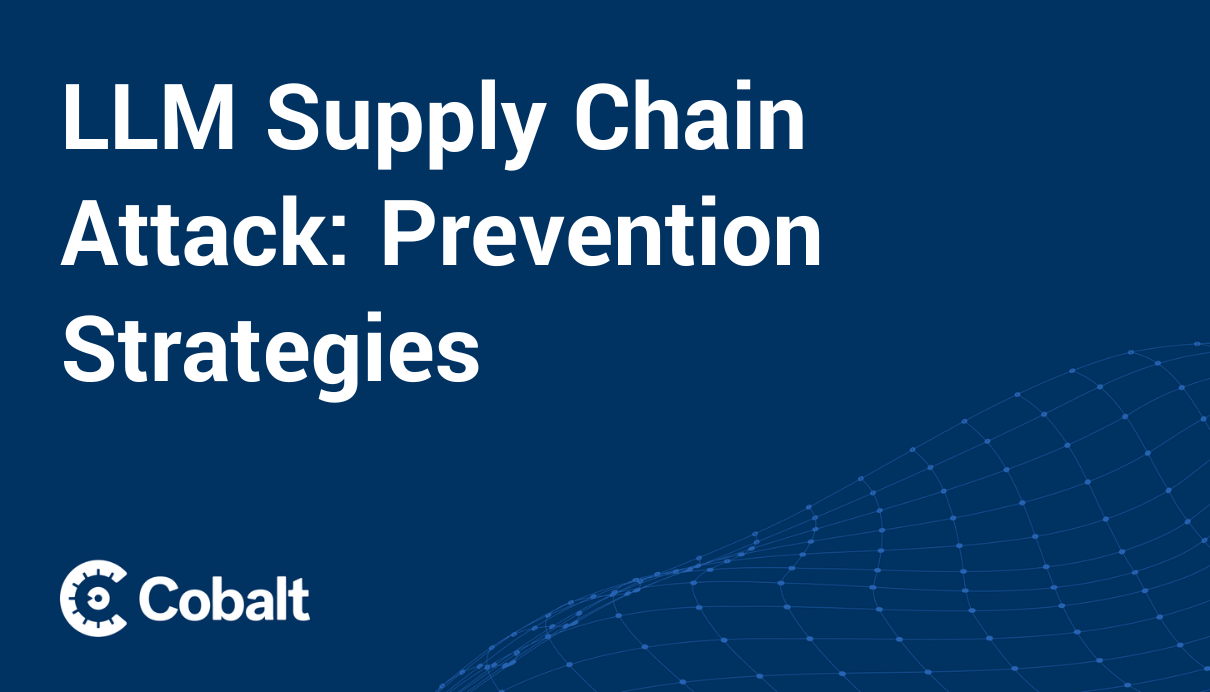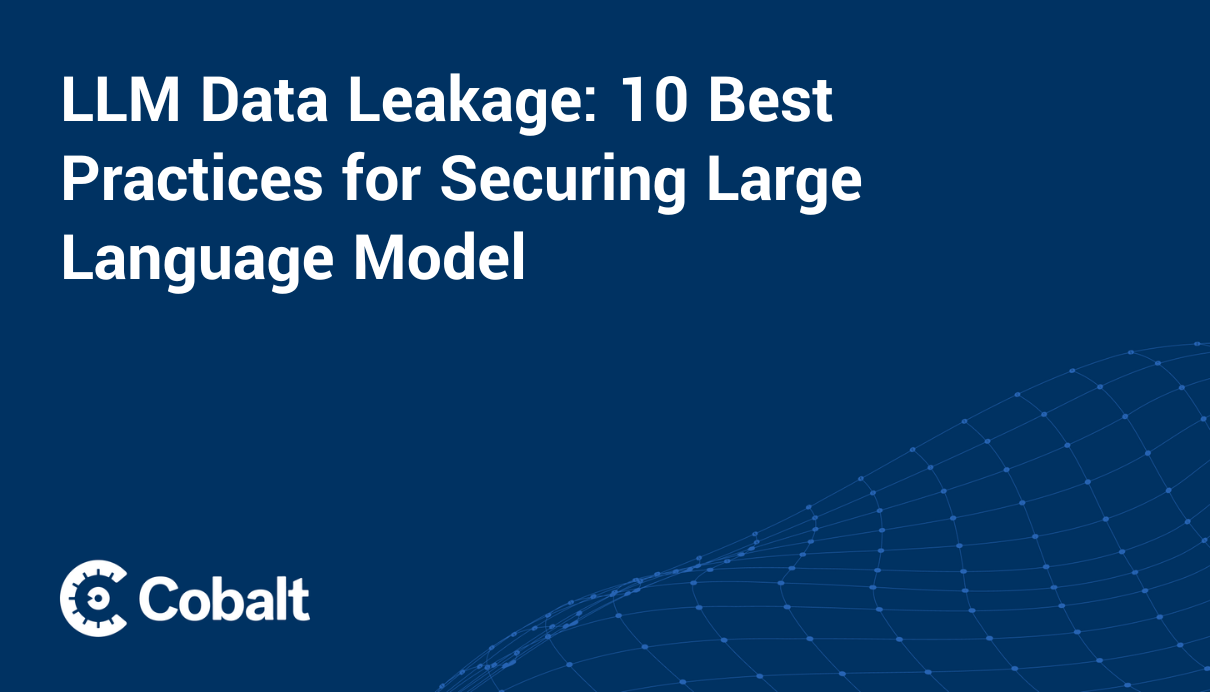Large Language Models (LLMs) process and generate human-like text, enabling applications in natural language processing, content creation, and automated decision-making. However, as their utility and complexity increase, so does their attractiveness to cybercriminals.
LLM theft poses significant threats, not only undermining intellectual property rights but also compromising competitive advantages and customer trust. Below, we'll explore the landscape of LLM theft, including its impacts, common theft methods, and prevention strategies.
Understanding LLM Theft
LLM theft refers to the unauthorized acquisition, copying, or use of proprietary AI models. This form of theft not only violates intellectual property rights but also undermines the competitive positioning of companies that have invested heavily in their development.
The theft can occur through tactics like cyber breaches, insider threats, or through the exploitation of vulnerabilities in the storage and transmission of these models.
The Attraction for Cybercriminals
The allure of LLM to cybercriminals lies in their intrinsic value and potential for misuse. Stolen models can be used to create competitive products, enhance illicit operations, or be sold on the black market.
Key factors include:
- Intellectual Property Value: The proprietary nature of LLMs (encompassing unique algorithms and data) presents a wealth of intellectual property. When stolen, this type of information can provide obvious advantages to competitors or malicious actors.
Let's say a pharmaceutical company relies on an LLM to analyze vast amounts of research data to help identify potential drug candidates. If this LLM is stolen, the thief could exploit its unique algorithms and data, gaining insights into drug development pipelines that could be sold to competitors or used to patent treatments first. - Competitive Advantage: Access to advanced LLM technology can significantly impact market dynamics, allowing unauthorized users to leapfrog technological developments and disrupt industries.
So, if an e-commerce platform uses an LLM for personalized customer recommendations, a key feature that differentiates it in the market. The theft of this model could allow a rival platform to implement similar technology rapidly, undermining the original platform's market position and customer loyalty. - Economic and Strategic Impact: Beyond immediate financial gains from selling or leveraging stolen LLMs, cybercriminals can inflict long-term economic and strategic damage on victim organizations, eroding market share and customer trust.
The theft of a model may allow competitors or malicious entities to replicate the service, diminishing the firm's unique value proposition and directly impacting its revenue and market position.
Modes of LLM Model Theft
Cybercriminals employ various tactics to steal LLMs. These can range from direct attacks on data repositories and networks to more insidious methods like social engineering or exploiting insider access. Understanding these methods is crucial for developing effective countermeasures.
Examples of LLM Model Theft
-
Unauthorized Repository Access: Hackers try to exploit security vulnerabilities (in a cloud storage service, for example) to gain unauthorized access to LLM repositories so they can steal or alter the models.
- Insider Leaking: Trusted individuals within an organization intentionally leak an LLM, betraying internal security measures.
- Security Misconfiguration: An LLM is accessed by unauthorized parties that exploit misconfigured network permissions.
- GPU Service Exploitation: Inadequate security configurations may expose LLMs to potential theft due to oversight or error in network or application settings.
- Querying for Replication: Attackers use vulnerabilities in shared computing environments to access or infer proprietary information from LLMs processed on the same infrastructure. For example, through extensive automated querying of a chatbot's API, hackers could reverse-engineer the underlying LLM.
- Side-Channel Attack: Attackers analyze indirect data, such as power usage or electromagnetic emissions, to extract information about the LLM's operations without needing direct access.
6 Strategies to Prevent LLM Model Theft
Preventing LLM theft requires a layered security strategy that addresses various vulnerabilities and potential attack vectors. Implementing these strategies not only safeguards against theft but also fortifies the LLM ecosystem against a broader spectrum of threats.
1. Prompt Injection Prevention
Prompt injection allows attackers to exploit an LLM's processing capabilities to execute unauthorized commands or reveal sensitive information, allowing a hacker to steal or replicate the model. Preventing this starts with enforcing strict privilege controls on who can interact with the LLM and under what circumstances. By limiting the LLM's operational scope to only essential functions and requiring human oversight for actions that could potentially expose the model or its data, organizations can significantly reduce the risk of prompt injection attacks.
Moreover, segregating external content from genuine user prompts ensures that the model does not inadvertently process potentially malicious input as legitimate queries. This segregation can be achieved through sophisticated input validation mechanisms that scrutinize the content for signs of tampering or malicious intent before allowing it to reach the model.
2. Securing Output Handling
Secure output handling involves treating LLM outputs as potentially unsafe and then validating and encoding them to prevent exploitation and mitigate risks like XSS and SSRF, which could be leveraged to gain unauthorized access or escalate privileges.
This tactic requires validating and possibly encoding the outputs from LLMs to ensure they do not contain any sensitive information or instructions that could be used to access or infer the underlying model or its data. For example, an LLM might inadvertently generate outputs that include hints about its training data, architecture, or even security vulnerabilities if not properly checked. Such information could be invaluable to an attacker aiming to steal or replicate the model.
By treating all LLM outputs as untrusted by default, organizations force a layer of scrutiny that can filter out or modify any data that could compromise the model. This approach parallels the sanitization processes used to prevent SQL injection attacks in databases, where output data is treated with caution to prevent malicious use.
Read more about Insecure Output Handling vulnerability in LLMs.
3. Addressing Supply Chain Vulnerabilities
Supply chain vulnerabilities can emerge from third-party data providers, external software libraries, or even plugins that are integrated with LLM systems. If compromised, these elements could serve as indirect pathways for attackers to gain insights into or access to the LLM, facilitating theft or unauthorized replication.
Mitigating these risks requires a multi-layered approach involving:
- Carefully assess the security protocols and reputation of all data sources and suppliers involved in the LLM ecosystem to ensure that only reliable, secure data feeds into the model, reducing the risk of training data poisoning or the introduction of backdoors.
- Conducting thorough security assessments of any third-party software libraries or components used in conjunction with LLMs. It's important to regularly update these components to patch known vulnerabilities and employ software composition analysis tools to monitor for new risks.
- Design plugins with security in mind, including strong authentication mechanisms and data access controls. Plugins should be limited to necessary functionalities and any actions that could potentially expose sensitive information or the LLM itself should be subjected to additional scrutiny and validation.
- Incorporate adversarial testing practices, such as red team exercises, to simulate attacks on the supply chain and identify weaknesses.
- Train staff involved in the development and maintenance of LLMs on the risks associated with supply chain vulnerabilities.
4. Preventing Sensitive Information Disclosure
This strategy involves a series of measures designed to ensure that LLMs do not inadvertently reveal confidential or proprietary information, such as insights into the LLM's training data, underlying algorithms, or operational frameworks, which could be exploited to steal, replicate, or undermine the model.
This requires:
- Employing data sanitization algorithms to automatically redact sensitive information from LLM outputs (output filtering).
- Strengthening input validation to detect and block prompts that could lead the LLM to reveal sensitive information using pattern recognition and anomaly detection techniques.
- Using the principle of least privilege to limit the LLM's data access to the minimum necessary for its functionality.
- Conducting regular security audits and penetration testing to identify and fix vulnerabilities that could lead to sensitive information disclosure, using both automated tools and expert reviews.
- Implementing security training for teams involved with LLMs, focusing on the identification and prevention of potential data leakage points.
5. Limiting Excessive Agency
This requires setting clear boundaries on the actions LLMs can autonomously perform. By restricting the functions and data LLMs can access and requiring human oversight for critical decisions, organizations can prevent unintended or harmful outcomes. This approach ensures that LLMs operate within a safe and controlled environment, reducing the risk of actions that could lead to data breaches or model theft.
6. Reducing Overreliance
While LLMs can provide valuable insights and efficiencies, relying solely on their output without verification can lead to vulnerabilities. Establishing protocols for cross-verifying LLM-generated information with trusted data sources and encouraging a culture of skepticism and validation among users minimizes the risk of acting on inaccurate or manipulated information. Read more about LLM Overreliance.
Case Study: The Meta LLaMA Leak
In early 2023, Meta faced a significant security breach when its large language model, LLaMA (Large Language Model Meta AI), was leaked online. Originally intended for academic and research purposes under strict access controls, LLaMA's model weights were shared on a public internet forum by someone with authorized access.
The Incident
Meta's LLaMA was designed to advance research in natural language processing and was made available to select researchers under stringent access conditions. However, the model weights were leaked when an authorized user shared them on a public forum, making the model accessible to anyone with an internet connection. This unauthorized distribution quickly spread across various platforms, leading to widespread availability of the model.
The Impact
The unauthorized release of LLaMA raised several concerns:
- Security Risks: The leak exposed the model to potential misuse, including generating harmful content or conducting sophisticated phishing attacks.
- Intellectual Property: Meta's proprietary technology was distributed without consent, undermining their investment and competitive edge.
- Ethical Concerns: The incident sparked debates about the balance between open access for research and the need for controlled distribution to prevent misuse.
Key Takeaways
- Strict Access Controls: Even with strict access controls, it's crucial to implement additional security measures, such as monitoring and auditing access to sensitive models.
- Employee Training: Educating those with access about the importance of data security and the potential consequences of leaks can help prevent such incidents.
- Robust Response Plans: Having a plan in place to quickly address and mitigate the impact of leaks can help manage the fallout and protect the company's interests.
The Meta LLaMA leak serves as a stark reminder of the importance of robust cybersecurity measures in protecting advanced AI technologies. As we continue to develop powerful AI models, ensuring their security and ethical use must remain a top priority.
Securing the Future of LLMs
LLMs can continue to drive innovation and efficiency as long as they are safeguarded. The most effective defense against LLM theft and misuse is a combination of human oversight and technological safeguards. Integrating these strategies deeply into LLM development and deployment ensures LLMs serve their intended innovative purposes while maintaining high levels of security and reliability.
Incorporating Pentesting as a Service (PtaaS) into this mix further strengthens LLM-enabled and AI application security by proactively identifying and addressing vulnerabilities through expert external assessments.
- Unauthorized Repository Access: Exploiting security vulnerabilities to gain access to where LLMs are stored.
- Insider Leaks: Individuals within an organization intentionally leaking the LLM.
- Security Misconfiguration: Exploiting incorrectly configured network permissions, leaving LLMs accessible to unauthorized parties.
- GPU Service Exploitation: Security misconfigurations that expose LLMs to potential theft via oversight in network and application settings.
- Querying for Replication: Exploiting vulnerabilities in shared computing environments to infer proprietary model information through extensive API querying.
- Side-Channel Attacks: Analyzing indirect data like power usage to extract information about the LLM.












